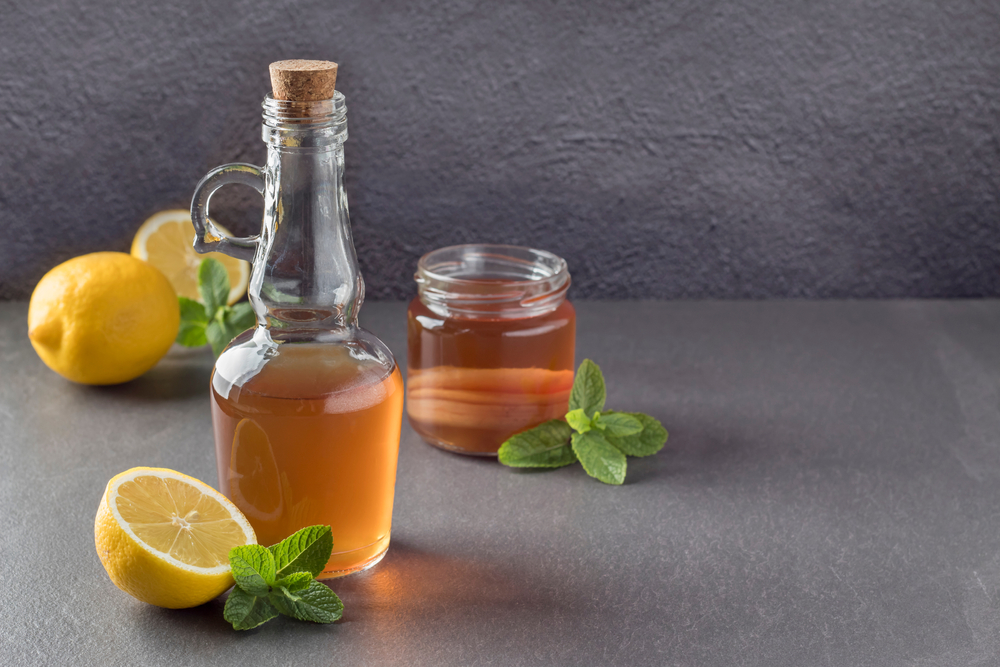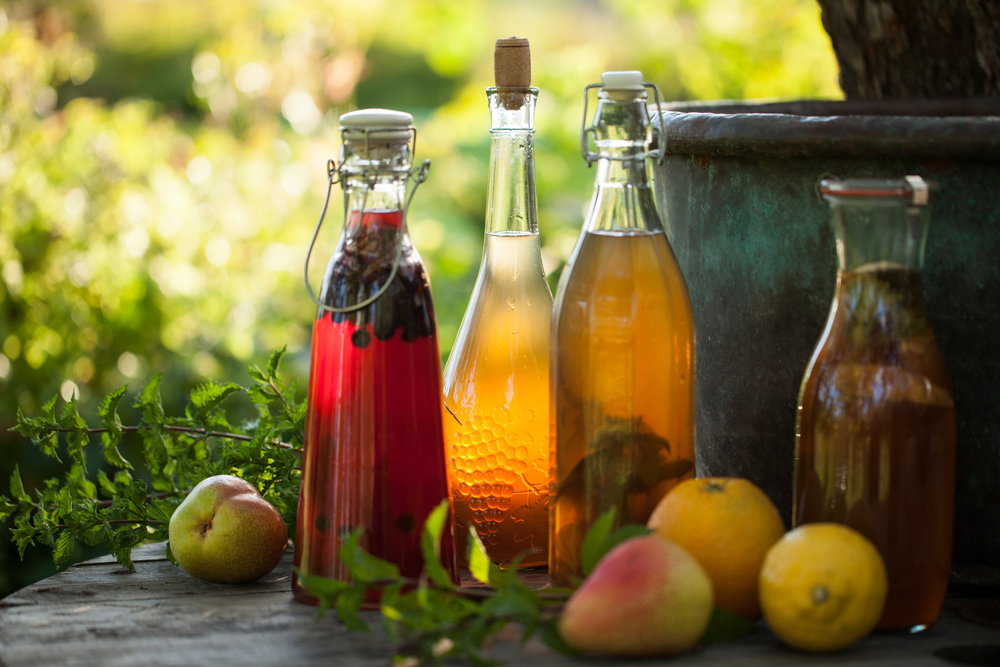Homemade kombucha is easy and inexpensive to make. The more you brew, the more familiar you’ll be with the process. Kombucha is technically ready to drink after the first fermentation, but most brewers do a second fermentation before indulging.
Table of Contents
How Long Does It Take to Brew Kombucha?
It takes between two and six weeks to brew kombucha. Kombucha usually undergoes two fermentation cycles before it is finished fermenting and ready to drink.
During the first fermentation, the sweet tea ferments with a SCOBY. The mixture yields a baby SCOBY that usually sits on top of your brew. Beneficial acids, enzymes, and probiotics grow. After one week, your batch should taste slightly sour and smell slightly of vinegar.
During the secondary fermentation, you ferment your batch of kombucha in glass bottles. Your kombucha gets fizzy and develops its full flavor. You can add fruit or spices to enhance the flavor of your brew.
What Does Kombucha Taste Like When It’s Ready?
Kombucha tastes slightly vinegary and subtly sweet when it’s ready. Some describe the taste as ‘sharp’ or say it has a bite. You should be able to taste your kombucha’s sharpness and sweetness when it’s ready.
If you’d like to taste it during the process, use a clean ladle or large spoon and gently push the SCOBY down into the brew while you extract your sample. Wait at least five days after starting your first ferment before you taste it. Disturbing your brew too early may delay your baby SCOBY from forming and alter the fermentation process.
How Long Should the First Kombucha Fermentation Last?
The first fermentation should last between one and three weeks. The exact time depends on your desired taste and environmental factors. After the first fermentation, your kombucha won’t have much carbonation. It will just be fermented tea that has grown a new SCOBY (symbiotic culture of bacteria and yeast).

Some home brewers like to bottle their kombucha while it’s still sweet. Others prefer to wait longer and bottle it when it’s turned sour. Start tasting your homebrew after five days and learn how the flavor profile changes over time. Decide which taste you enjoy and note how many days your kombucha fermented. The beauty of brewing your own kombucha is that you can learn to make it exactly as you enjoy it!
Once you bottle your first batch of kombucha, start your next batch. If you really enjoy kombucha, you’ll always want to have some tea in each fermentation stage.
What Should Kombucha Look Like After Five Days?
After five days, your kombucha tea should:
- Have a new SCOBY growing on top of or down in your homebrew
- Be slightly lighter and cloudier than when you started the batch
- Smell slightly vinegary or acidic
- Taste less sweet than your original sweetened tea
Examine your process if you can’t see at least two to three of these changes. Did you add enough sugar to your sweet tea? Did you monitor the temperature of your brew? Does your SCOBY look healthy?
If you can see these changes, you’re on the right track and close to starting your 2nd ferment!
Can You Ferment Kombucha for Too Long?
Yes, you can ferment kombucha for too long. The kombucha SCOBY is a living culture and will continue to ferment your brew for as long as you let it. It will turn into kombucha vinegar if you allow it to ferment too long.
Kombucha vinegar has many uses, so if you’ve over-fermented your homebrew, don’t throw it out! Set up a SCOBY hotel, use it for strong starter tea, or learn how to use it for cleaning!

What Affects the Fermentation Time?
Several factors affect fermentation time. Kombucha is a living food affected by environmental factors—just like people!
- The temperature of your brew. This is probably the factor that has the most effect on your kombucha. Temperatures above 85 degrees Fahrenheit can make it ferment too quickly. Temperatures below 65 degrees Fahrenheit will cause the SCOBY to stall and ferment too slowly. Maintaining a temp between 68 and 80 degrees Fahrenheit is ideal.
- The volume of the sweet tea you want to ferment. The more sweet tea you make, the longer it will take to ferment. A gallon batch will take longer than a quart batch.
- The diameter of your SCOBY. Wider SCOBYs ferment faster than narrow SCOBYs. Since wider SCOBYs have more surface area touching the brew, they ferment it more quickly.
- Age of your SCOBY. More mature SCOBYs tend to brew faster since they build up more yeast and enzymes the longer they are alive.
- The shape of your brewing vessel. The best brewing jars are wide in diameter rather than tall or narrow. This shape allows the SCOBY to touch and ferment more of the brew.
- The amount of starter tea added to the new batch of kombucha. The starter tea helps jump-start your brew, so the more you add, the faster it will work.
Is the Second Fermentation Necessary?
No, the second fermentation is not necessary. The first fermentation supplies your kombucha with all the health benefits that make kombucha a beneficial drink.
The 2nd fermentation creates carbon dioxide, giving your brew fizz. Most homebrewers 2nd ferment with fruit to create flavored kombucha. However, you can bottle kombucha and enjoy all the benefits after the 1st ferment.

How Long Does the Second Fermentation Last?
The second fermentation process takes an additional three to seven days. Get creative during the 2nd fermentation! Add fruit, spices, or herbs and enhance the taste of your kombucha. If you let your brew ferment a bit too long during the 1st fermentation, add a sweet fruit like strawberries or peaches to add some sweetness back.

